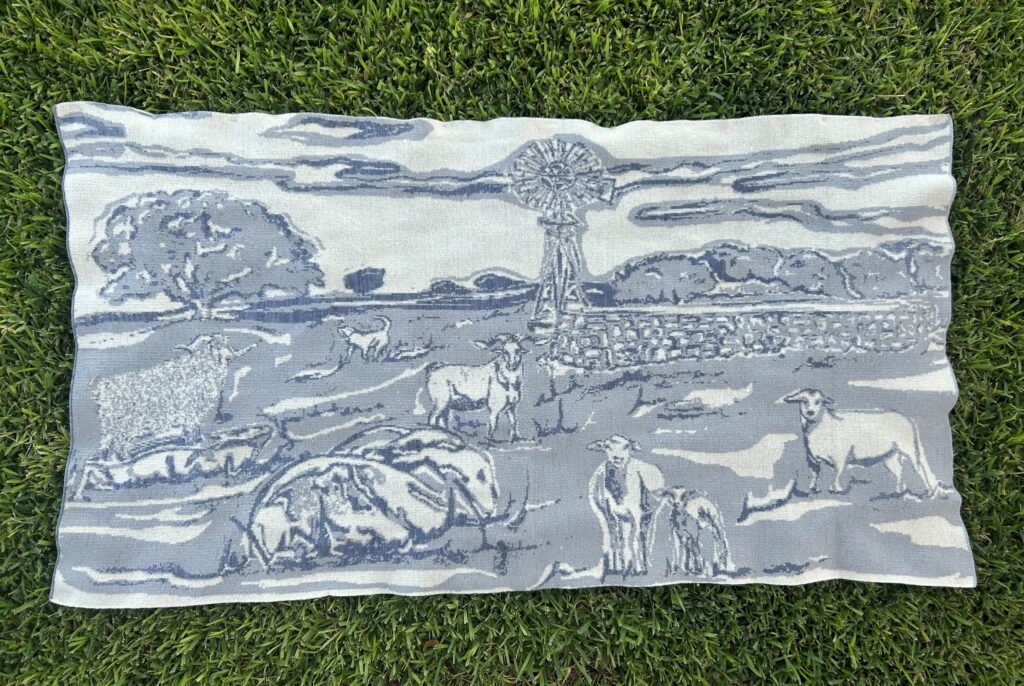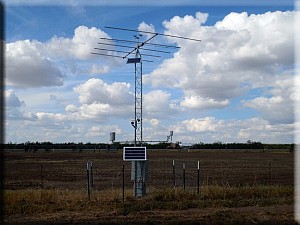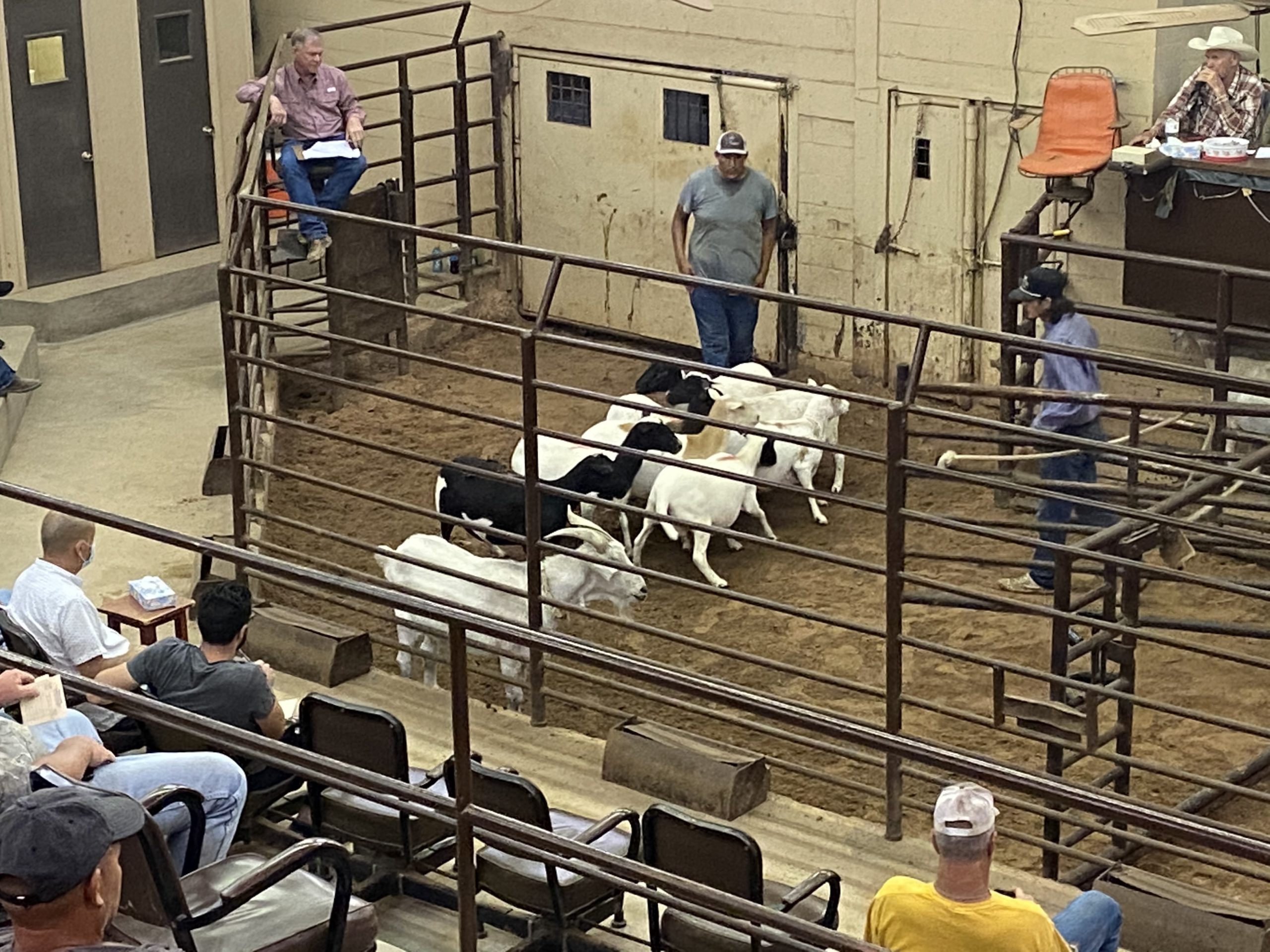Why LGDs harm livestock
Fall has arrived and winter is coming soon! This typically means breeding season for many sheep and goat producers. Make sure that you keep an eye on your dogs if this is their first breeding season. Breeding rams or billies introduced to a flock/herd of females may be perceived as a threat by LGDs. They may try to keep their females away from the males or attack the bucks. By keeping a watchful eye on your young dogs, you can discourage this behavior and keep your breeding rates up. Check out more timely tips at the end of this blog.
LGD Field Day – Munday
The fal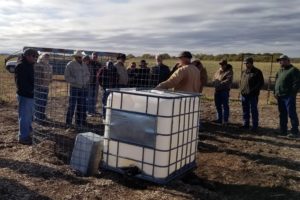 l LGD Field Day in Knox County on October 25 was a great event for sheep and goat producers. I want to thank Jerry Coplen, the Knox County AgriLife Extension Agent, for all his help with the event and providing producers with a view of his operation. Lunch was sponsored by Central Texas Farm Credit. I want to thank the local county Extension agents for helping cater the event. The food was delicious and helped warm everyone up on a cold day. Producers viewed a variety of presentations on topics including GPS Tracking, Dog Health, LGD Feeding Systems, Legal Issues with LGDs, Wildlife Services, a producer panel and a ranch visit. I want to thank Nestle Purina, AgriLife Research and Crazy Goat Socks for donating door prizes. If you missed the event, we are considering on another field day for the spring. Watch the AgriLife LGD Facebook page @TAMUlivestockguarddog for more information on that event.
l LGD Field Day in Knox County on October 25 was a great event for sheep and goat producers. I want to thank Jerry Coplen, the Knox County AgriLife Extension Agent, for all his help with the event and providing producers with a view of his operation. Lunch was sponsored by Central Texas Farm Credit. I want to thank the local county Extension agents for helping cater the event. The food was delicious and helped warm everyone up on a cold day. Producers viewed a variety of presentations on topics including GPS Tracking, Dog Health, LGD Feeding Systems, Legal Issues with LGDs, Wildlife Services, a producer panel and a ranch visit. I want to thank Nestle Purina, AgriLife Research and Crazy Goat Socks for donating door prizes. If you missed the event, we are considering on another field day for the spring. Watch the AgriLife LGD Facebook page @TAMUlivestockguarddog for more information on that event.
I would like to thank the sponsors below for your generous support of the field day in Munday:
Gold Sponsors
Capital Farm Credit – Munday Central Texas Farm Credit – Haskell
Haskell Feeds – Haskell Haskell Veterinary Clinic – Haskell
Jim Cowsert Real Estate Appraisals—Munday Nestle Purina—St. Louis
Noelke/Wilhelm Ranch—Menard P&W Service Center—Munday
Sheep & Goat Predator Management Board—San Angelo
Silver Sponsors
Air-Ag Inc.—Knox City Citizens Bank—Knox City
Knox County Farm Bureau— Munday Quality Implement—Munday
LGD Puppy Bonding Project
The pup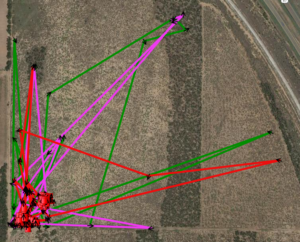 py bonding project is going well. The Maremma pups are 19 weeks old and the Akbash pups are now 16 weeks. The Maremma pups have gone out into a 100-acre pasture for their final bonding phase which will last until they are yearlings. This next phase for these pups will help us determine if the electric fencing in their bonding pens was a lasting deterrent to digging out of their pasture. We will also be able to track how the siblings have bonded with the stock and their interaction with each other when they are allowed more space to roam. On the left is a picture of the pups traveling over a 24-hour period. We will be tracking the movements of the livestock also in the next few weeks.
py bonding project is going well. The Maremma pups are 19 weeks old and the Akbash pups are now 16 weeks. The Maremma pups have gone out into a 100-acre pasture for their final bonding phase which will last until they are yearlings. This next phase for these pups will help us determine if the electric fencing in their bonding pens was a lasting deterrent to digging out of their pasture. We will also be able to track how the siblings have bonded with the stock and their interaction with each other when they are allowed more space to roam. On the left is a picture of the pups traveling over a 24-hour period. We will be tracking the movements of the livestock also in the next few weeks.
The Maremma pups will also be getting neutered soon. It’s important to spay or neuter your dog’s so that they don’t wander to find a mate and leave your stock unguarded. In addition, females rearing pups have a reduced ability to guard your stock and while caring for her offspring.
Breed Spotlight – Great Pyrenees
I often get questions about what breed of LGD is best. Based on research there are more differences within a breed than there is across the breeds. There are over 30 breeds worldwide and I will cover as many as possible over the next couple of years. This month’s LGD breed, the Great Pyrenees, is one of the most common found in the United States and is commonly crossed with other LGD breeds in Texas. My first LGD was ½ Great Pyrenees and ½ Akb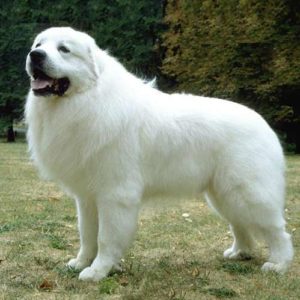 ash.
ash.
A breed standard picture from the American Kennel Club is on the right. Great Pyrenees are a long-haired breed with a double coat. They are generally a solid white livestock guardian dog originally from the Pyrenees Mountains between France and Spain. They may have shades of gray, tan or badger in their coats. Remains of Great Pyrenees have been found in fossil records dating back to the Bronze Age (1800-1000 BC). Their coat is thick which helps shed water in the winter and insulate it from the cold; however, it presents challenges for warm climates such as Texas. According to the American Kennel Club, they tend to be strong willed, independent, patient, protective and loyal to their charges. Females start out at 85lbs and higher, while males will be 100lbs or more in weight. They stand 25-32 inches at their withers. A 27 inch tall dog will weigh about 100lbs. (Source: https://www.akc.org/dog-breeds/great-pyrenees/)
Health and Wellness
If you have a dog that has lost condition and is still not gaining weight you may want to try a probiotic. I have used a product from Purina’s Pro Plan line called FortiFlora several times. I have found it to work well if the dog has gone off feed for some reason. FortiFlora is a canine probiotic supplement that comes in a small packet that you sprinkle over the dog’s food. It contains a safe strain of beneficial bacteria that promotes and restores intestinal micro-flora so that the intestines can absorb nutrients from the feed again. We are currently using it on Max, one of our dogs that had lost weight this past summer. After a few days of using the product, Max already seems to be feeling better, has increased his feed intake and his weight is increasing. If you feel that your dog’s appetite could be improved, contact your veterinarian and ask him/her about FortiFlora.
LGD Timely Tips:
- Regular checks of your LGDs body condition score are important. Your dog should ideally be a score of five at all times. By now your LGD should have put on the weight that it lost over the summer months. If your dog has not increased its condition score, consider taking them to your veterinarian for a checkup.
- Make sure your LGD is gaining weight for the colder months ahead and that its coat is clean. A coat that is free of mats and burrs will shed water better and provide more insulation.
- Hunting season is here. Remind hunters again, that LGDs are not pets and that they should be treated as a working dog. Socializing with the dogs or feeding the dogs treats keeps them coming back to their blinds. You may want to remove dogs from pastures that hunters will be in to stop a problem before it starts.
To provide feedback on this article or request topics for future articles, please contact me at bill.costanzo@ag.tamu.edu or 325-657-7311.
Bill Costanzo
Research Specialist II, Livestock Guardian Dogs
Follow us on Facebook: https://www.facebook.com/TAMUlivestockguarddog/

